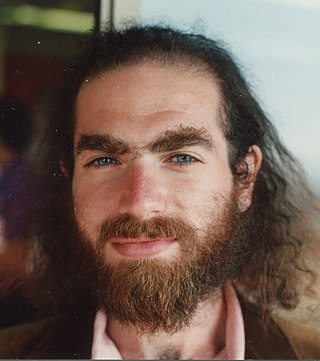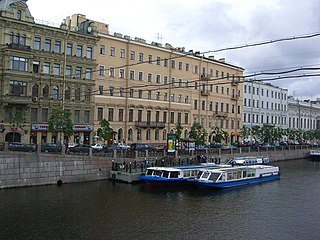In geometry, a Johnson solid, sometimes also known as a Johnson–Zalgaller solid, is a strictly convex polyhedron whose faces are regular polygons. They are sometimes defined to exclude the uniform polyhedrons. There are ninety-two solids with such a property: the first solids are the pyramids, cupolas. and a rotunda; some of the solids may be constructed by attaching with those previous solids, whereas others may not. These solids are named after mathematicians Norman Johnson and Victor Zalgaller.

Grigori Yakovlevich Perelman is a Russian mathematician who is known for his contributions to the fields of geometric analysis, Riemannian geometry, and geometric topology. In 2005, Perelman resigned from his research post in Steklov Institute of Mathematics and in 2006 stated that he had quit professional mathematics, owing to feeling disappointed over the ethical standards in the field. He lives in seclusion in Saint Petersburg and has declined requests for interviews since 2006.

Norman Woodason Johnson was a mathematician at Wheaton College, Norton, Massachusetts.

Aleksandr Danilovich Aleksandrov was a Soviet/Russian mathematician, physicist, philosopher and mountaineer.

Viktor Yakovlevich Bunyakovsky was a Russian mathematician, member and later vice president of the Petersburg Academy of Sciences.

Yuri Dmitrievich Burago is a Russian mathematician. He works in differential and convex geometry.

Anatoly Moiseevich Vershik was a Soviet and Russian mathematician. He is most famous for his joint work with Sergei V. Kerov on representations of infinite symmetric groups and applications to the longest increasing subsequences.

In geometry, a flexible polyhedron is a polyhedral surface without any boundary edges, whose shape can be continuously changed while keeping the shapes of all of its faces unchanged. The Cauchy rigidity theorem shows that in dimension 3 such a polyhedron cannot be convex.

The St. Petersburg Department of Steklov Institute of Mathematics of the Russian Academy of Sciences is a mathematical research institute in St. Petersburg, part of the Russian Academy of Sciences. Until 1992 it was known as Leningrad Department of Steklov Institute of Mathematics of the USSR Academy of Sciences.
Isaak Moiseevich Milin, ; * February 16, 1919, Oster, Ukrainian Soviet Socialist Republic – † November 17, 1992 Saint-Petersburg, Russian Federation) was a prominent Soviet/Russian mathematician, doctor of science in physics and mathematics, senior researcher, specialist in Geometric Theory of Functions of a Complex Variable and Applied Mathematics, engineer-lieutenant-colonel at the Soviet Air Force.

John William Lott is a professor of Mathematics at the University of California, Berkeley. He is known for contributions to differential geometry.
The Alexandrov uniqueness theorem is a rigidity theorem in mathematics, describing three-dimensional convex polyhedra in terms of the distances between points on their surfaces. It implies that convex polyhedra with distinct shapes from each other also have distinct metric spaces of surface distances, and it characterizes the metric spaces that come from the surface distances on polyhedra. It is named after Soviet mathematician Aleksandr Danilovich Aleksandrov, who published it in the 1940s.

Quince and Teapot is a decorative still life of Russian painter Victor Kuzmich Teterin, which depicts the quince fruit and teapot on a silver tray.
Dmitri Yurievich Burago is a leading Russian - American mathematician, specializing in differential, Riemannian, Finsler geometry, geometric analysis, dynamical systems and applications to mathematical physics.
In mathematics, the Cartan–Hadamard conjecture is a fundamental problem in Riemannian geometry and Geometric measure theory which states that the classical isoperimetric inequality may be generalized to spaces of nonpositive sectional curvature, known as Cartan–Hadamard manifolds. The conjecture, which is named after French mathematicians Élie Cartan and Jacques Hadamard, may be traced back to work of André Weil in 1926.
Geometric Folding Algorithms: Linkages, Origami, Polyhedra is a monograph on the mathematics and computational geometry of mechanical linkages, paper folding, and polyhedral nets, by Erik Demaine and Joseph O'Rourke. It was published in 2007 by Cambridge University Press (ISBN 978-0-521-85757-4). A Japanese-language translation by Ryuhei Uehara was published in 2009 by the Modern Science Company (ISBN 978-4-7649-0377-7).
Convex Polyhedra is a book on the mathematics of convex polyhedra, written by Soviet mathematician Aleksandr Danilovich Aleksandrov, and originally published in Russian in 1950, under the title Выпуклые многогранники. It was translated into German by Wilhelm Süss as Konvexe Polyeder in 1958. An updated edition, translated into English by Nurlan S. Dairbekov, Semën Samsonovich Kutateladze and Alexei B. Sossinsky, with added material by Victor Zalgaller, L. A. Shor, and Yu. A. Volkov, was published as Convex Polyhedra by Springer-Verlag in 2005.
In mathematics, the Besicovitch inequality is a geometric inequality relating volume of a set and distances between certain subsets of its boundary. The inequality was first formulated by Abram Besicovitch.










